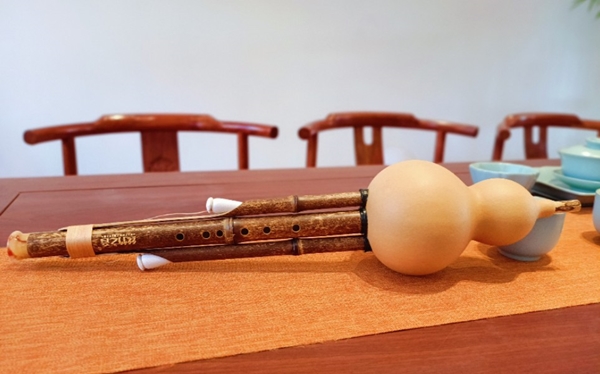Hulusi long sound practice guide: Analysis of key elements and precautions
As a kind of elegant and expressive national wind instrument, the purity and fullness of its timbre largely depend on the accuracy and fluency of the long tone. Practicing long sound is a necessary basic skill for every huluzi learner. The following will discuss the key points and specific matters that need to be paid attention to when practicing long sound of huluzi.

First, the correct way to breathe
1. Abdominal breathing
The first thing to master in practicing long notes is abdominal breathing, which controls the breath through the expansion and contraction of the abdominal muscles to ensure the permanence and stability of the notes. The abdomen bulges when inhaling and contracts when exhaling, so that the breath is long and strong.
2. Circular breathing
For longer notes, try to use circular breathing, that is, at the end of the exhalation, use the gap to inhale instantly, so that the sound can continue uninterrupted.
Second, intonation and timbre control
1. Intonation
When playing long notes, it is important to ensure the accuracy of intonation, which can be corrected by electronic tuning or comparing with other fixed-pitch instruments. The beginning, middle and end of each note should be consistent in pitch.
2. Timbre
Keep the sound pure and saturated, avoid the sound shake or hoarseness caused by unstable breath or improper playing method. By controlling the Angle and force of your lips, tongue and breath, you strive to create a steady, beautiful sound.
Third, the control and distribution of breath
1. Uniform breath output
Long note practice requires the performer to distribute one breath evenly and smoothly over the whole note, avoiding sudden fluctuations in airflow that can cause sudden changes in pitch or volume.
2. Adaptation to dynamic changes
Even if it is a long note practice, it is necessary to learn to simulate the strong and weak changes in the real music while keeping the intonation and timbre stable, and achieve the relaxation of the music by adjusting the strength and speed of the breath.
Fourth, persistent practice and mental adjustment
1. Practice in stages
Beginners can start with shorter time values and gradually increase the length of long notes as they gain breath control until they reach a specified or customized target length.
2. Adjust your mindset
Long note practice is boring, but it is an essential process to improve the performance level. Maintain patience and perseverance, have a clear sense of purpose and progress in each practice, and enjoy the sense of accomplishment of pushing your limits every time.
fifth,Physical health and habit formation
1. Physical condition
Maintaining good physical condition is essential for long tone practice, especially the health of lung capacity and respiratory tract. Regular exercise to enhance physical fitness is conducive to improving the ability to play long notes.
2. Correct posture
During practice, play in a comfortable position and relax your neck, shoulders and abdomen to help the breath flow smoothly.
In short, the long tone practice of hulusi is a long-term and meticulous process. Only after mastering the correct breathing method, the control of intonation and timbre, the reasonable distribution of breath and the persistent adjustment of mentality can we gradually improve our playing skills on this basis, so as to go further on the road of music.
 渝公网安备 50010702504639号
渝公网安备 50010702504639号